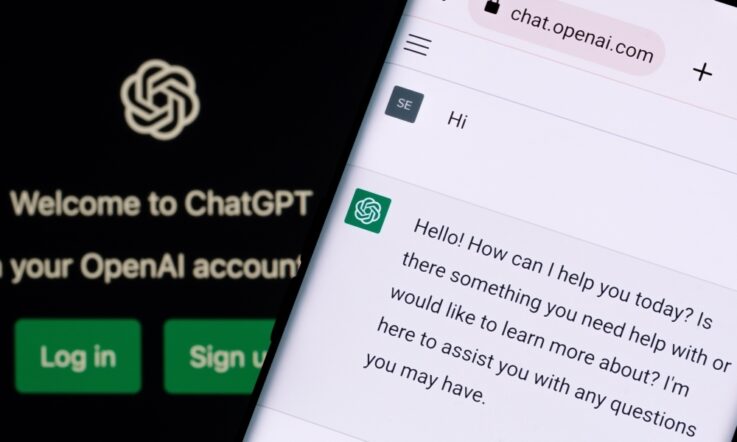As Artificial Intelligence (AI) tools and programs become more sophisticated, teachers are starting to look at how they can be successfully incorporated into their lesson planning.
Meesha Arora teaches Economics at The British School, New Delhi and has been using AI in lessons since the start of the academic year in August 2023. More recently, she has used ChatGPT and Character.ai with her year 12 students for a reflective assignment.
‘I undertook an interesting journey with my International Baccalaureate Diploma Programme (IBDP) students, utilising AI to delve into the nuances of 2 popular schools of economic thought – Classical and Keynesian,’ she tells Teacher.
ChatGTP is a large language model chatbot. In Character.ai, users can create characters (real or imagined) with specific personalities, skills and traits. Members of the community can have conversations with these published characters through this chatbot program.
Meesha says her students had differing levels of understanding of the 2 AI tools used in the year 12 assignment. ‘Most had prior knowledge of popular tools like ChatGPT but not Character.ai. Preconceptions ranged from expectations of ideal responses to concerns about the legitimacy of information generated by AI. They also understood the criticality of generating clear and accurate prompts to get more appropriate responses pertaining to the needs of the assignment.’
The task was part of a larger unit on economic theories. ‘It was undertaken after students had already studied the Classical and Keynesian schools of thought in the classroom guided by supportive pedagogical tools and practices. The assignment served as a reinforcement activity for the concepts learnt and an extension activity to promote ATL (Approach to Learning) skills of thinking, communication, and research.’
Students worked individually to frame questions for ChatGPT and Character.ai – prompting the tools to answer from the perspective of chosen economists from the 2 schools of thought. ‘One of the goals was to explore which tool might be more accurate with regards to an insight into the contrasting theories of the schools. Students framed questions that delved into the core principles of each school – addressing issues such as role of government, efficiency of the market mechanism, short run vs long run, conflict between macroeconomic objectives and so on.’
Meesha says key considerations when planning such a learning activity included students were aware of ethical considerations such as privacy of their information and potential bias of responses, adding the task had built-in time for reflection. She says these pauses were essential for student analysis and evaluation – giving them an opportunity to compare AI-generated content with traditional theories learnt in class, identify any inconsistencies, and strengthen their understanding of the economic concepts being taught.
‘While both tools demonstrated an impressive ability to articulate contextually relevant answers, out of the 2 tools it was ChatGPT that seemed more accurate in its responses to questions that covered less popular topics like the Long Run Phillips Curve.
‘While the quality of responses generated by ChatGPT depends on the appropriateness of prompts provided, Character.ai assumes the character of the personality one wishes to interact with, and students seemed to have fun in engaging with AI characters of economists like JM Keynes and Friedrich Hayek and asking them questions within and beyond the scope of the assignment in a conversational mode. Some of the responses threw a fresh perspective on the theories learnt in class – incorporating real-world context made students look at already understood economic concepts from a new lens.’
Meesha guided her students to critically analyse the responses with material covered in class and in textbooks, highlighting the potential risks of accepting information given by AI chatbots as 100% accurate. ‘On comparing with the class notes and textbooks, students were able to discover numerous cases where the responses generated seemed to have strayed from the established theories and misinterpreted less popular concepts. This deviation ensured that students learnt the critical lesson of accepting responses generated by the AI models with a critical eye.’
After the assignment, students were asked to write up their reflections, showcasing their improved understanding and views on the benefits and pitfalls of the 2 AI tools. Meesha says the task allowed students to clarify their own misconceptions. ‘The interactive nature of the AI tools allowed students to ask unending questions and seek clarification on a variety of subtopics while receiving prompt responses, which created a dynamic learning environment.’
As for tips for other teachers who would like to incorporate AI into their lesson planning – she recommends starting with clear learning objectives and aligning the most appropriate AI tools as per the student age group. ‘Guidance must be provided on ethical and privacy considerations and the assignments should be framed in a way to foster critical thinking skills while interpreting AI-generated content. Incorporating reflection and discussion opportunities throughout the activity can help enhance student engagement and understanding.’
Meesha Arora says this extension activity was a good way to promote ATL (Approach to Learning) skills of thinking, communication, and research. Are these skills highlighted in your own lesson planning? How do you go about teaching them?



